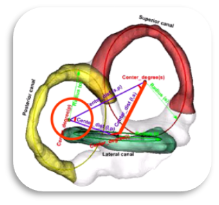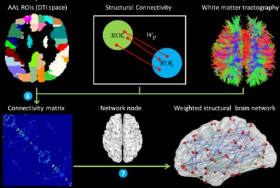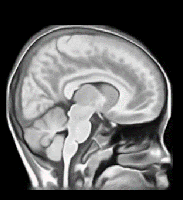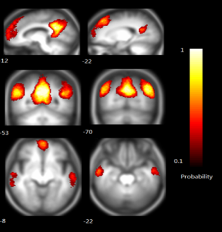Copyright © 2014. All rights reserved. Research Centre for Mediical Image Computing. | Privacy | Disclaimer



Vestibular System Morphoanatomy

Brain Connectivity
Innovative computational methods were developed to test the hypothesis that the morphoanatomy of vestibular system in adolescent idiopathic scoliosis (AIS) patients is different from healthy control subjects, which contribute to the understanding of the etiopathogenesis of AIS. The geometry of this high-genus labyrinth structure was analyzed through automatic partition into genus-0 units and approximation using the best-fit circle and plane for each unit. The metrics of the best-fit planes and circles were taken as shape measures. This is the first study on MRI-based morphoanatomy studies of vestibular system.



Structural changes after ischemic stroke could affect information communication extensively in the brain network. It is likely that the defects in the white matter (WM) network play a key role in information interchange. In this study, we used graph theoretical analysis to examine potential organization alteration in the WM network architecture derived from diffusion tensor images from subjects with no dementia and experienced stroke. Compared with normal controls, topological efficiency was basically unaltered in the patients with chronic stroke, as reflected by unchanged local and global clustering coefficient, characteristic path length, and regional efficiency.
Chinese Pediatric Brain Template


Constructing an atlas from a population of brain images is of vital importance to medical image analysis. Our methods include a set of preprocessing procedures to improve the image quality and developed an intensity and sulci landmark combined groupwise registration method to align the population of images for atlas construction. As demonstrated in experiments, the newly constructed atlas can better represent the size and shape of brains of Chinese pediatric population.
Research Centre for Medical Image Computing


Default-mode network (DMN) has become a prominent network among all large-scale brain networks which can be derived from the resting-state fMRI (rs-fMRI) data. Statistical template labeling the common location of hubs in DMN is favorable in the identification of DMN from tens of components resulted from the independent component analysis (ICA). This paper proposed a novel iterative framework to generate a probabilistic DMN template from a coherent group of 40 healthy subjects. By validating the constructed DMN template on the rs-fMRI data from another 40 subjects, the generated probabilistic DMN template and the proposed similarity matching mechanism were demonstrated to be effective in automatic selection of independent components from the ICA analysis results.